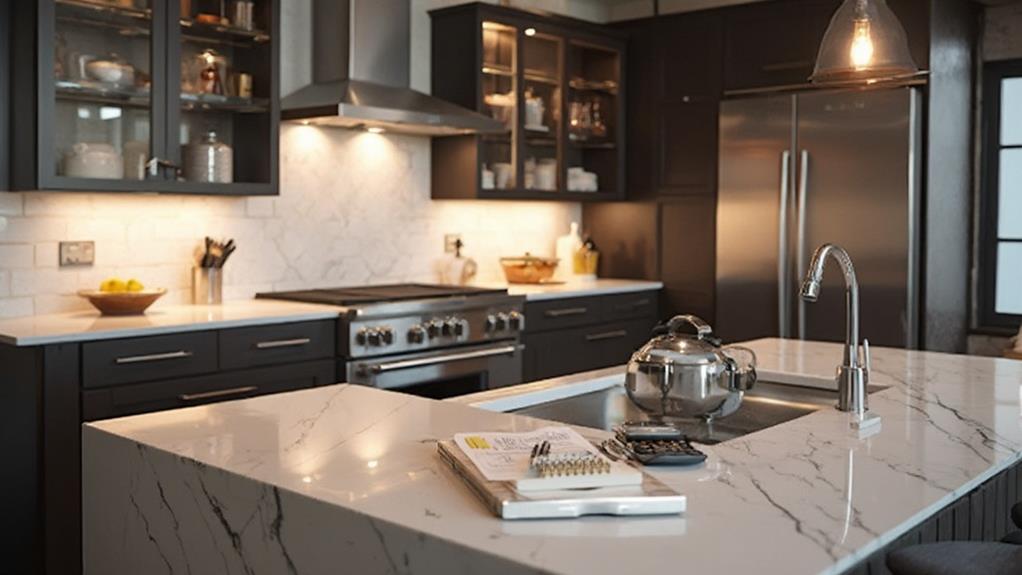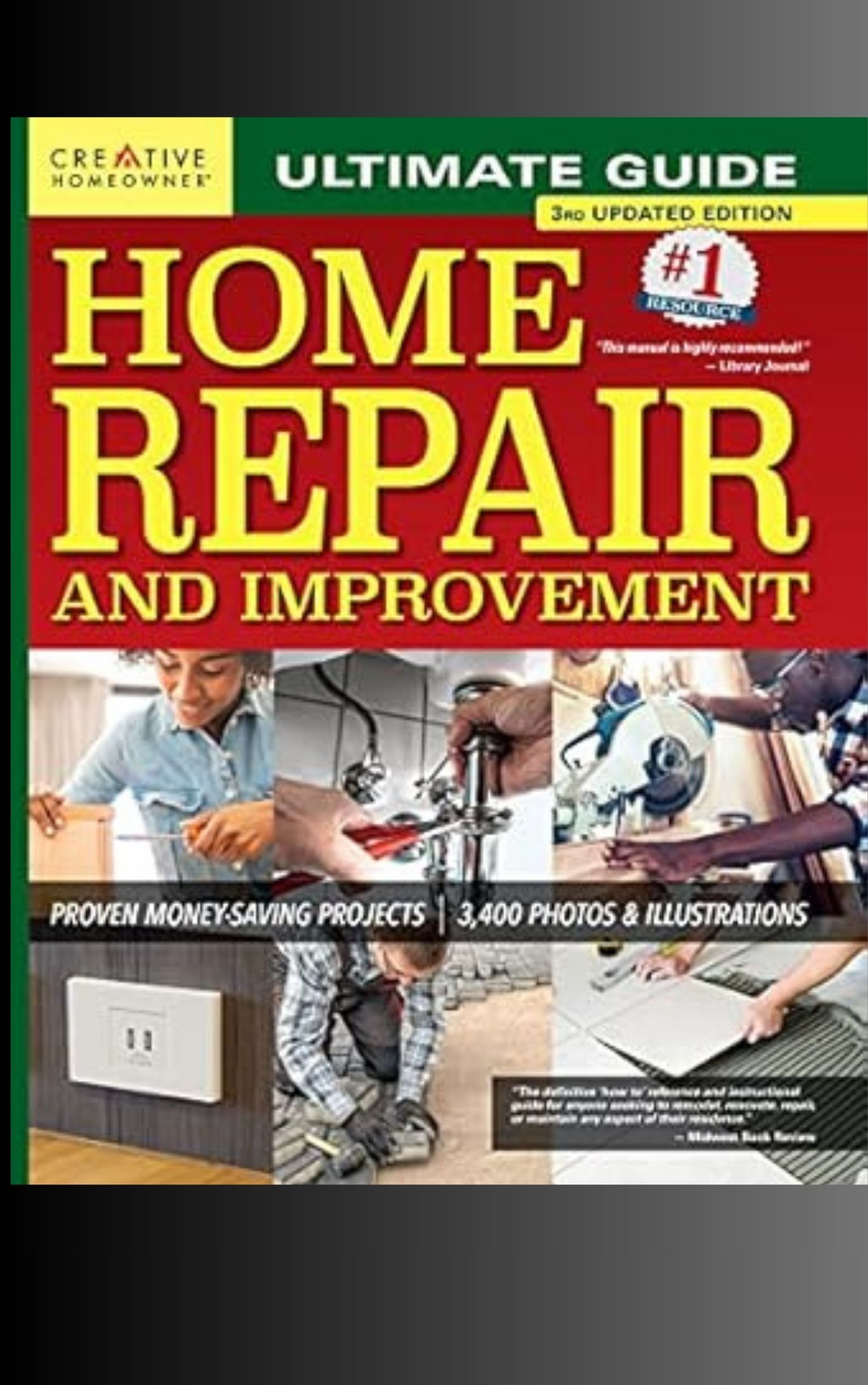Creating a realistic budget for kitchen appliances and fixtures involves several key steps. Start by assessing your current kitchen's needs and identifying which items require replacement or upgrading. Research costs for various appliance brands and models, comparing features and prices. Prioritize essential fixtures while considering energy-efficient options to potentially save on long-term costs. Explore financing options if needed, and don't forget to factor in installation expenses. Allocate a larger portion of your budget to high-impact, frequently used items. Remember to include a buffer for unexpected costs and regularly review your budget throughout the process. This approach ensures a well-planned kitchen renovation project.
Assess Your Kitchen Needs
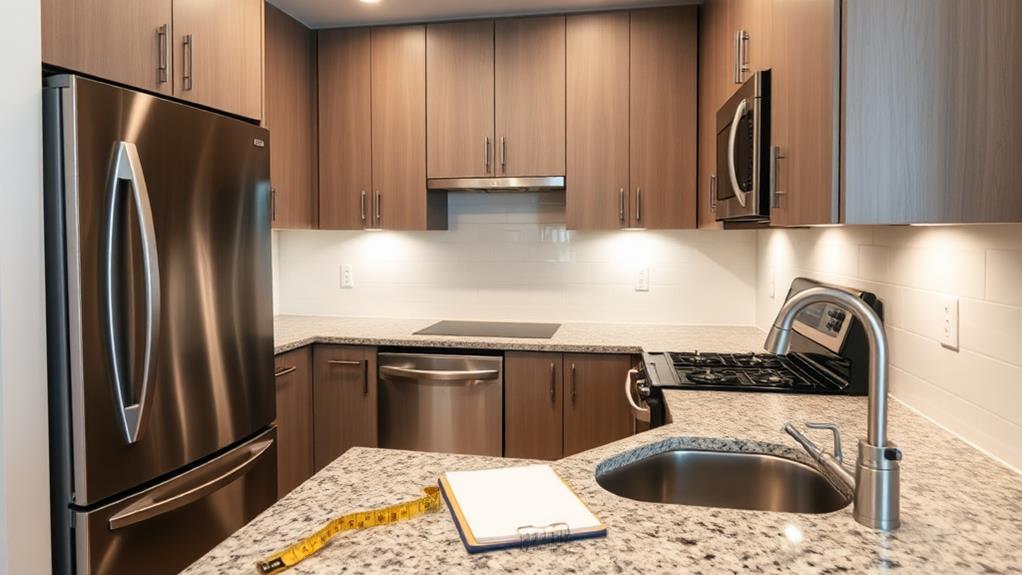
Practicality should be the cornerstone of any kitchen renovation project. Before diving into the world of appliances and fixtures, take a step back and evaluate your kitchen's current state and your household's needs. Start by considering your cooking habits, family size, and lifestyle. Do you frequently entertain guests? Are you an avid baker or a gourmet chef? These factors will influence the types and sizes of appliances you'll require.
Next, assess your available space and layout. Measure your kitchen dimensions carefully, noting the locations of existing plumbing and electrical connections. This information will help you determine which appliances and fixtures will fit comfortably in your kitchen without overcrowding or compromising functionality.
Consider energy efficiency when selecting appliances. Energy-efficient models may have a higher upfront cost but can lead to significant savings on utility bills in the long run. Additionally, evaluate the condition of your current appliances and fixtures. Identify which items need immediate replacement and which can be updated later, allowing you to prioritize your budget allocation effectively. By thoroughly assessing your kitchen needs, you'll be better equipped to make informed decisions and create a realistic budget for your renovation project.
Research Appliance Costs
Armed with a clear understanding of your kitchen needs, the next crucial step is researching appliance costs. Begin by exploring various brands and models that meet your requirements, focusing on quality, energy efficiency, and durability. Compare prices across different retailers, both online and in-store, to get a comprehensive view of the market.
Consider the long-term costs associated with each appliance, including energy consumption and potential maintenance expenses. Look for Energy Star certified products, which can lead to significant savings over time. Don't forget to factor in installation costs, as some high-end appliances may require professional installation.
Be aware of seasonal sales and promotional periods, such as Black Friday or end-of-year clearances, which can offer substantial discounts. However, don't compromise on quality for a lower price. Research customer reviews and expert opinions to gauge the reliability and performance of specific models.
Lastly, explore package deals offered by manufacturers or retailers, which can provide savings when purchasing multiple appliances together. Remember to allocate a portion of your budget for unexpected expenses or last-minute upgrades that may arise during the renovation process.
Prioritize Essential Fixtures
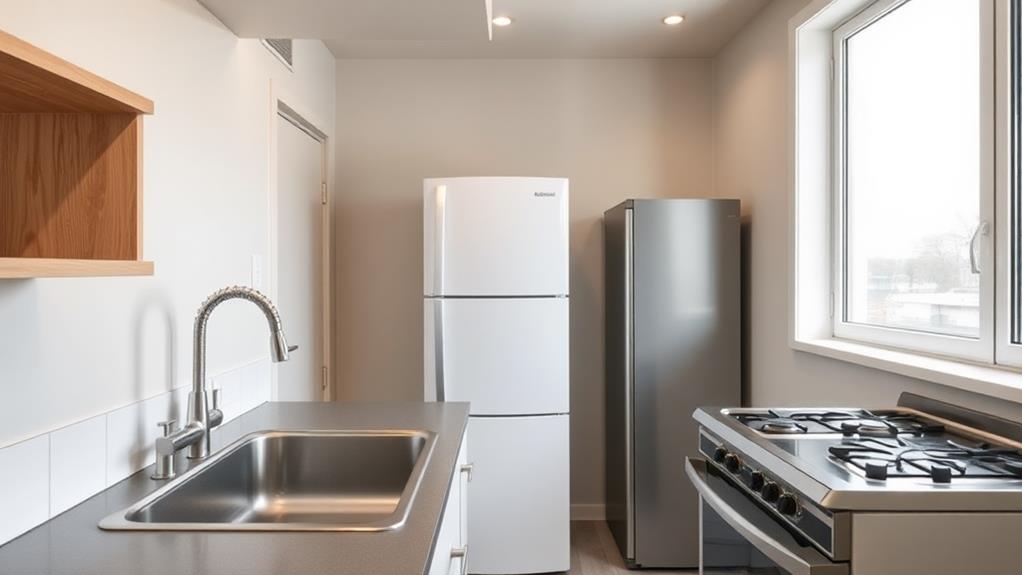
When it comes to kitchen fixtures, prioritizing the essentials is crucial for creating a functional and efficient space within your budget. Start by focusing on the must-have items that form the backbone of your kitchen's functionality. These typically include the sink, faucet, and lighting fixtures.
The sink is a focal point and workhorse of any kitchen, so invest in a durable, high-quality option that suits your needs. Consider factors like size, material, and configuration (single or double bowl).
Next, choose a reliable faucet with features that match your cooking habits, such as a pull-down sprayer or touchless operation.
Adequate lighting is essential for both safety and ambiance. Prioritize task lighting over sinks and countertops, as well as general overhead lighting. If budget allows, under-cabinet lighting can greatly enhance functionality.
Other fixtures to consider include cabinet hardware, a garbage disposal, and a water filtration system. These items can significantly impact your kitchen's usability but may be less critical than the primary fixtures. Evaluate their importance based on your specific needs and lifestyle, adjusting your budget accordingly to accommodate the most essential elements first.
Consider Energy Efficiency
In light of rising energy costs and environmental concerns, considering energy efficiency when selecting kitchen appliances and fixtures is not only cost-effective but also ecologically responsible. Energy-efficient appliances may have a higher upfront cost but can significantly reduce long-term operating expenses and environmental impact. When budgeting, factor in potential energy savings over the lifespan of the appliance.
Look for ENERGY STAR certified products, which meet strict energy efficiency guidelines set by the U.S. Environmental Protection Agency and the Department of Energy. These appliances typically use 10-50% less energy than standard models. For major appliances like refrigerators, dishwashers, and ovens, prioritize those with high energy efficiency ratings.
Consider LED lighting fixtures, which consume less electricity and have a longer lifespan than traditional bulbs. Low-flow faucets and water-efficient dishwashers can help reduce water consumption and associated energy costs for heating water. When selecting a range hood, opt for models with variable speed controls to optimize energy use. By prioritizing energy efficiency in your kitchen renovation budget, you can create a more sustainable and cost-effective space for years to come.
Explore Financing Options
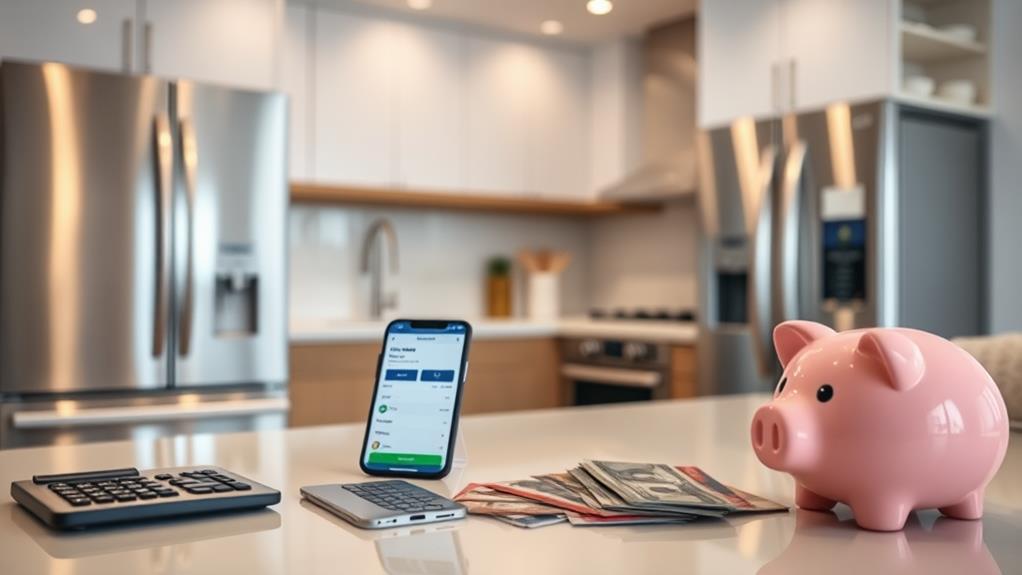
Flexibility in financing can significantly expand your options when budgeting for kitchen appliances and fixtures. Many retailers and manufacturers offer various financing plans, including low or zero-interest options for qualified buyers. These arrangements can help you spread the cost of high-end appliances over time, making them more attainable within your budget.
Consider exploring store credit cards, which often come with introductory offers like deferred interest or cashback rewards on large purchases. Some stores also provide layaway programs, allowing you to reserve items and pay for them gradually. For more substantial kitchen renovations, home equity loans or lines of credit may be viable options, potentially offering tax benefits and lower interest rates compared to personal loans or credit cards.
Before committing to any financing option, carefully review the terms and conditions, paying close attention to interest rates, repayment periods, and any potential fees. Calculate the total cost of the purchase, including interest, to ensure it aligns with your long-term financial goals. Remember that while financing can make expensive appliances more accessible, it's crucial to avoid overextending your budget and taking on unmanageable debt.
Plan for Installation Expenses
Installation expenses are often overlooked when budgeting for kitchen appliances and fixtures, yet they can significantly impact the overall cost. These expenses can include labor, materials, and potential modifications to existing structures. Professional installation is crucial for ensuring proper functionality and safety, especially for gas appliances, electrical work, and plumbing.
When planning your budget, research average installation costs for each appliance and fixture. Factor in potential complexities, such as the need for new electrical outlets, gas lines, or water connections. Consider whether any structural changes are required, such as cabinet modifications or flooring adjustments. Some retailers offer installation services, which can be convenient but may come at a premium.
To minimize unexpected costs, have a professional assess your kitchen's current setup and provide a detailed estimate. This assessment can help identify potential issues early on. Additionally, consider timing your installations strategically to potentially save on labor costs. Be prepared for unforeseen challenges by allocating a contingency fund of 10-20% of your total budget. This buffer can help cover any unexpected expenses that may arise during the installation process.
Frequently Asked Questions
How Long Do Kitchen Appliances Typically Last Before Needing Replacement?
Kitchen appliances typically have varying lifespans. Refrigerators and dishwashers often last 10-13 years, while ranges and ovens can endure 13-15 years. Microwaves generally need replacement after 9-10 years. Regular maintenance can extend these lifespans considerably.
Are There Seasonal Sales or Best Times to Purchase Kitchen Appliances?
Coincidentally, major appliance sales often align with holidays. The best times to purchase kitchen appliances are typically during holiday weekends like Memorial Day, Labor Day, and Black Friday. Retailers also offer discounts during model changeovers in September and October.
What Are the Pros and Cons of Purchasing Extended Warranties?
Extended warranties offer peace of mind and potential cost savings on repairs. However, they can be expensive and often go unused. Consider the appliance's reliability, your risk tolerance, and the warranty's coverage before purchasing.
How Can I Estimate the Impact of New Appliances on My Utility Bills?
Coincidentally, many homeowners overlook this crucial aspect. To estimate utility bill impacts, research Energy Star ratings, compare efficiency metrics, and consult manufacturer specifications. Additionally, utilize online energy calculators or consult with local utility providers for personalized projections.
Are There Tax Incentives Available for Energy-Efficient Kitchen Appliance Upgrades?
Yes, tax incentives are often available for energy-efficient kitchen appliance upgrades. These may include federal tax credits, state rebates, and utility company incentives. Check with the Energy Star program and local authorities for specific offers in your area.
Conclusion
Creating a realistic kitchen budget requires careful planning and prioritization. Like a chef balancing flavors in a complex dish, homeowners must weigh needs against wants, costs against quality, and immediate expenses against long-term savings. A 2022 study found that energy-efficient appliances can reduce utility bills by up to 30%. By considering all aspects—from essential fixtures to installation costs—and exploring financing options, a well-crafted budget can transform a kitchen renovation from a daunting expense into a worthwhile investment in both home value and daily living.
